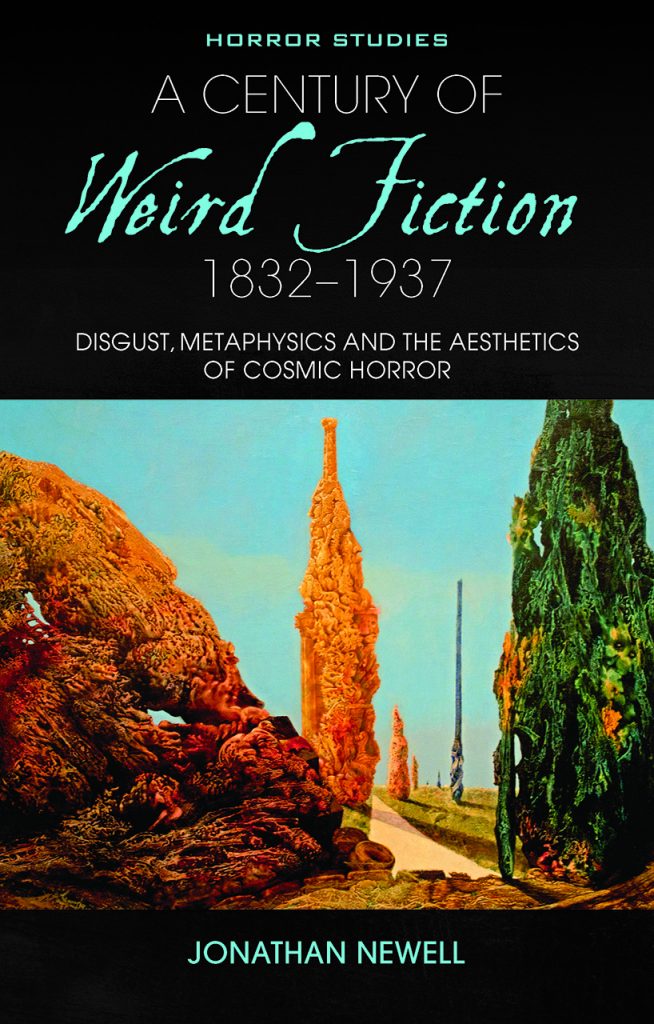
Jonathan Newell introduces A Century of Weird Fiction, 1832-1937: Disgust, Metaphysics and the Aesthetics of Cosmic Horror.
Deliquescent corpses murmuring from beyond the grave; slimy molluscoid horrors oozing through the ancient hills; a ravenous, miles-long pig stirring in a miasmatic abyss – the pages of weird fiction teem with grotesques, a bestiary of dripping, festering, quivering monstrosities designed to disgust. Distinct from the creeping dread or ‘terror’ more commonly associated with the Gothic, weird revulsion is the throbbing heart of A Century of Weird Fiction, 1832–1937: Disgust, Metaphysics, and the Aesthetics of Cosmic Horror. When my research began, I was initially drawn to a version of the age-old paradox of aversion – the question ‘why disgust?’ Why does weird fiction return again and again to this particular, powerful, singularly loathsome affect? In answering these questions, A Century of Weird Fiction brings together two critical approaches to the weird: aesthetic examinations of weird fiction and the puzzling pleasures of horror, and philosophical approaches that have connected weird fiction to burgeoning metaphysical movements such as speculative realism and new materialism.
Drawing on earlier metaphysicians such as Baruch Spinoza, Friedrich Schelling and Arthur Schopenhaur, and more recent thinkers like Jane Bennet, Stacy Alaimo, Karen Barad, Quentin Meillassoux and Iain Hamilton Grant, the book traces the twisted tendril of the weird from the works of Poe to those of Lovecraft, investigating the queasy relationship between disgust and metaphysics in its various permutations. Offering readings of what might be called the ‘weird canon’, including under-discussed but highly influential authors such as Algernon Blackwood and William Hope Hodgson, I argue that weird fiction uses disgust as part of its obsessive speculation about the nature of the universe at its most fundamental, its efforts to peel back layers of reality until it gazes on the raw bedrock of the cosmos. In contrast to the Gothic’s interest in the buried histories and hidden depths of the human, the weird is preoccupied with the non-human, with the radically Outside.
Disgust, perhaps surprisingly, proves the ideal tool for the weird’s relentless metaphysical explorations because of its constant threat to dissolve the boundary between subject and world. Arising when the self is threatened with contamination from something repulsively other, disgust exposes the permeability of what seemed stable borders, revealing them as anthropocentric conceits. Weird fiction, I suggest, uses disgust to produce a nauseous gnosis, undermining efforts to seal ourselves off from the unclean world around us and, instead, plunging us into a roiling, eerily agentive morass of materiality, the seething stuff of a deeply weird universe.
Jonathan Newell is an Instructor at Langara College in Vancouver, British Columbia. His research focuses on aesthetics and metaphysics in weird fiction, horror and the Gothic.


